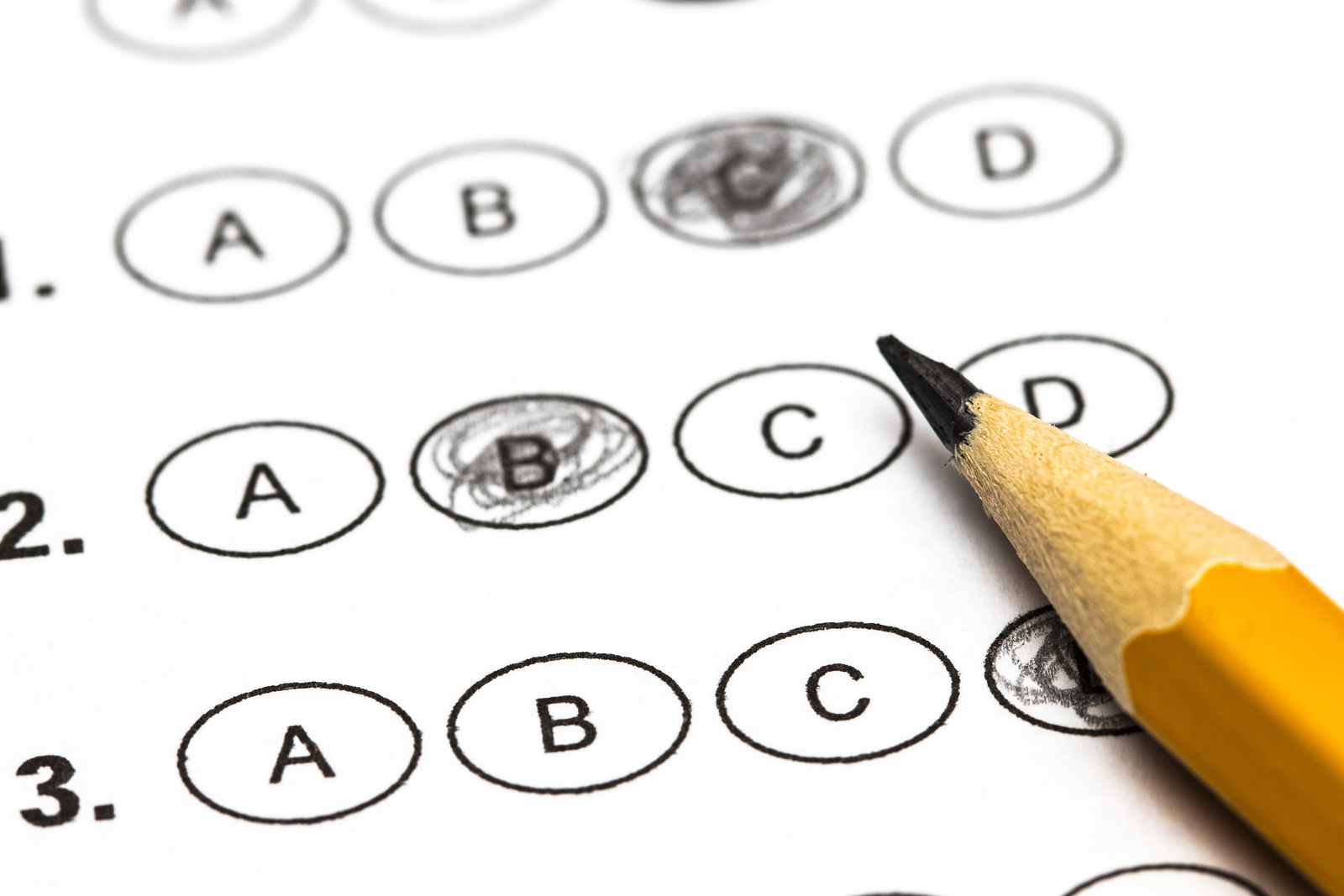If you had to give a piano performance a year from now, would you schedule all of your rehearsal time for the week before the show? Neither would we.
If you practiced even ten minutes a day on your piano for the whole year, you’d give a better performance than if you played 20 hours a day for that last week. Test taking is a lot like that.
Most people, understandably, think that standardized exams only test you on what you’ve already learned, and so there isn’t much reason to practice. We used to think that too. We found out how wrong we were when we started trying these tests out for ourselves. What we found out is that we not only needed to know the material that we would be tested on, but we also needed to know how to take the test. Standardized tests are full of all sorts of twists and turns that will be pretty surprising to anyone who hasn’t taken them before. Our first scores were terrible, and not because we didn’t understand the material. We didn’t understand how to take the test.
So here’s what we would do if we had a year to get ready for the test:
Try out a sample test.
One of the best things anyone can do to prepare for a test is to see what the test looks like. When we were getting ready for our first SAT student, we went through the How to Use This Book section, the Strategies section, the What to Do on the Day of the Test section… But the whole time what we really wanted to know was what the test looked like. We have a free sample test for you to try here. Once you sit down to try your first practice test, take it slowly. Don’t worry about the time yet. That will come closer to the end of the year. Take a glance at each section before you even try a single problem. If there is a section on engineering bridges, you want to know about it up front.
Read the instructions for each section, just so that you will understand what they will expect you to do. Getting familiar with the instructions now will mean that you don’t have to waste time understanding them on the real test. Now try the test. Take one section for now, or even part of a section if you don’t have a lot of time. Don’t worry that you aren’t getting everything right now. You don’t need to – we’ve got all year for that.
Don’t be surprised if you miss a lot of questions at first, since everyone does. This is where you find out how tricky the test questions can be.
Be sure you have some kind of daily practice material.
You’d like to be testing yourself on sample questions just about every day. Even if you only have ten minutes to spare, doing that over and over will make the test easier to understand. Do this enough, and you’ll be answering these questions without much effort pretty soon. You know how pianists can have two hands doing completely different things without having to think about it? That didn’t happen without spending time at a keyboard.
See where your weaknesses are.
We think that learning how to take the test is as important than knowing the material you’re being tested on. But brains also tend to put things in a back drawer when we haven’t used those things in a long time.
We had a student who was pretty good at taking tests, and got great grades. But we found out while working on his testing skills that he had forgotten how to do several operations in algebra. It wasn’t any big deal – he got them back quickly. But it was a good thing that he found out what he had forgotten before the test day.
So some of your practice days will be set aside for reviewing the material you need to know. If you’ve forgotten your PEMDAS, practice them again until they come easy. If you’ve forgotten the difference between a lowest common multiple and a greatest common factor, practice that now so that the test day doesn’t spring any big surprises. You can do all of this with old textbooks, or there are plenty of resources online if you prefer working that way.
With math, if you can get through the quiz sections of your grade level math book, you’ll be fine. Just be sure you don’t let any topics go for too long – remember how brains like to put things they’re not using in back drawers.
With language, find lists of commonly used vocab for the test you’re taking. These tests like to repeat the words they use quite a bit. No vocab list is a sure thing, but you’ll up your odds if your familiar with the words they seem to love. And we like to practice vocab as a puzzle or a game, rather than just memorizing words. We like the Quizlet.com scatter game, not only because it’s a great way to make a puzzle for your brain to solve, but it usually has commonly used vocab lists for just about any test.
With vocabulary sections, these tests will always stretch beyond grade level some. Or at least beyond the words that people use regularly. Sometimes there’s nothing you can do about that – you can never be sure of acing a vocab section until you know every word in the language. But you can get a big boost by studying Greek and Latin roots. Knowing those well can help pick up five or ten points in a language section. It will also help in other places – like school.
We like to see our students work hard, but we also don’t want to see test preparation become a prison. Too much hurry and stress can lock up a brain, even on easy questions. But if students start early, and spend a little time every day getting to know the test, they will increase their scores by leaps and bounds.
On days where there is a spare hour or more, great. The more of those the better. But even on days with only ten or fifteen minutes, doing a little helps a lot. And if a student starts early, doing a little over a long time will make a huge difference in a score.








Leave A Comment